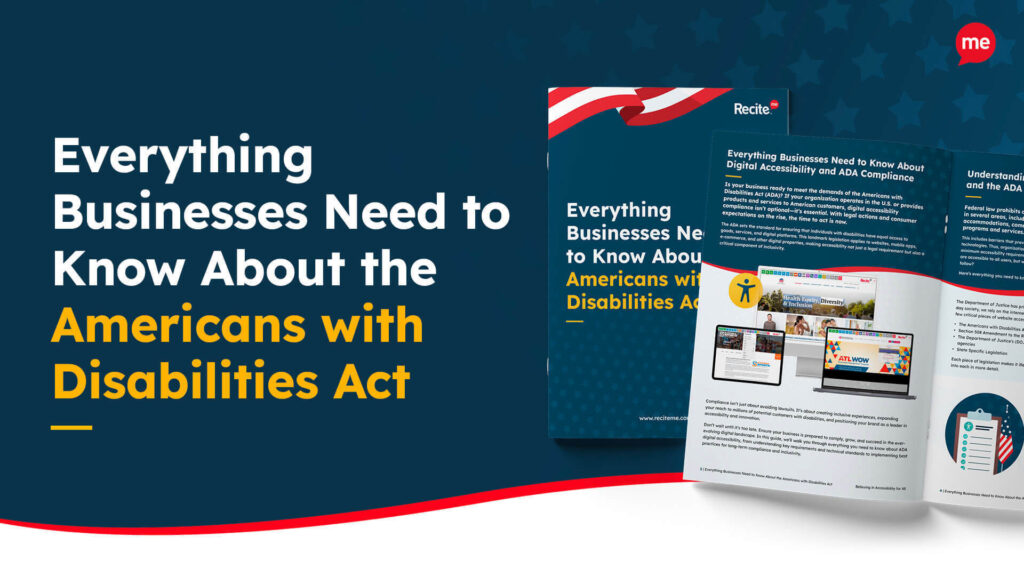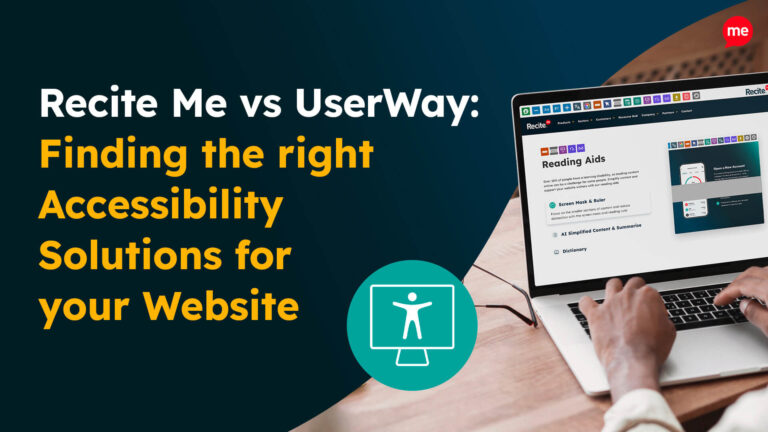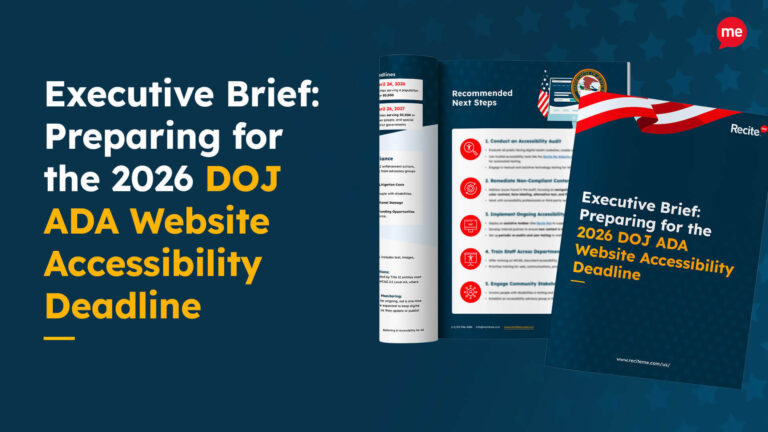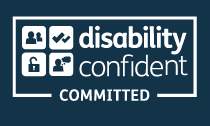Get A Free ADA Compliance Audit Of Your Website
Download NowMaking your website accessible isn’t just the right thing to do, it’s also required under the Americans with Disabilities Act (ADA). Many businesses don’t realize their websites may have hidden accessibility barriers that exclude people with disabilities and put them at risk of lawsuits. In this article, we’ll cover the most common ADA compliance issues found on websites, why accessibility matters, and the steps you can take to get your site compliant.
What is the Americans with Disabilities Act?
The Americans with Disabilities Act (ADA), passed in 1990, is a federal civil rights law that prohibits discrimination against individuals with disabilities. The ADA ensures that individuals with disabilities have equal access to employment, goods and services, and participation in state and local government programs.
It was originally focused on physical spaces but its scope was expanded to digital environments as the internet became central to daily life. According to ADA requirements, businesses and organizations must make their websites and digital tools accessible to all users, including those with visual, hearing, motor, or cognitive disabilities.

What are the standards for ADA compliance on your website?
Website ADA compliance is largely measured against the Web Content Accessibility Guidelines (WCAG), a globally recognized framework for making digital content accessible. These guidelines provide clear recommendations for designing websites, apps, and online tools so they can be used by people with different abilities.
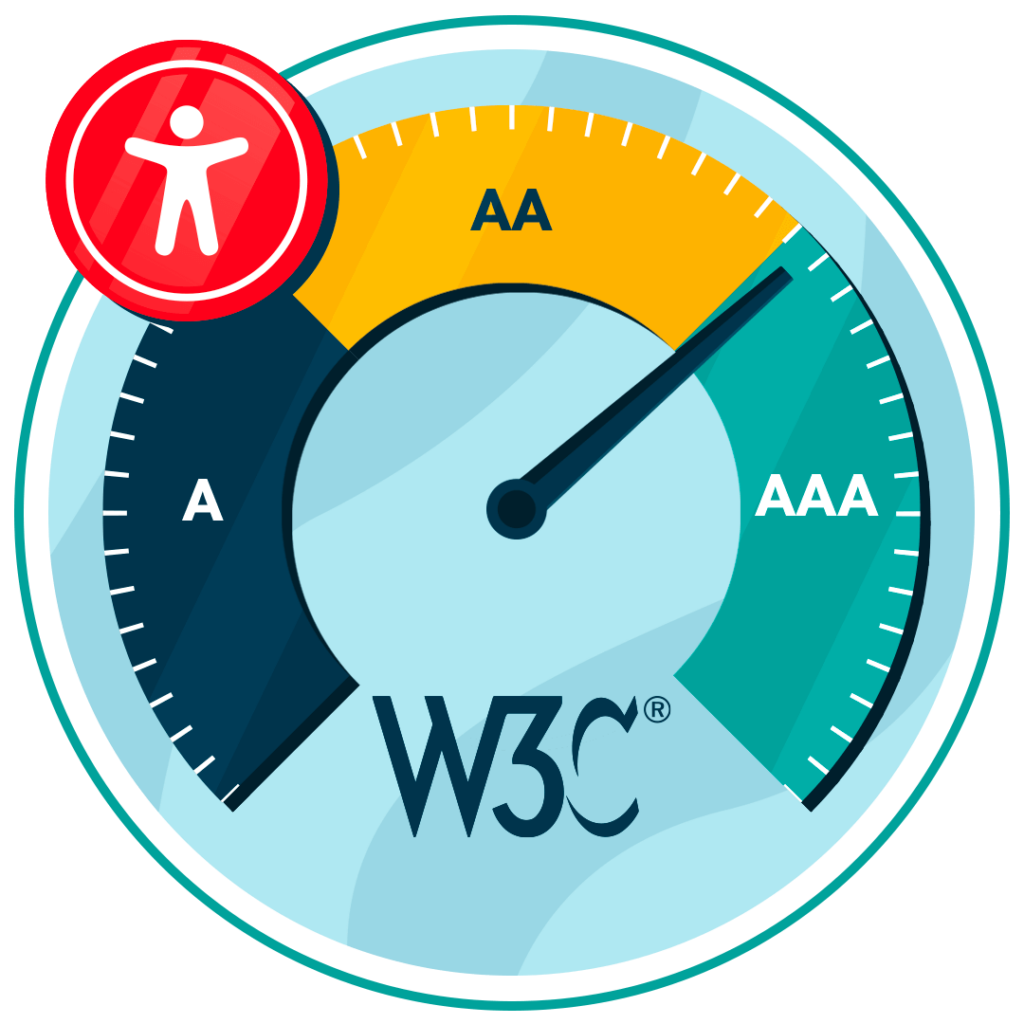
WCAG has three levels of compliance: Level A covers the most basic accessibility features, Level AA addresses common barriers, and Level AAA offers advanced accessibility (but can be difficult for all websites to achieve).
Businesses that meet WCAG 2.1 AA standards are generally considered ADA-compliant. By following these standards, you’re not just avoiding compliance issues, you’re also creating a smoother, more user-friendly website experience.
Want to make sure your website is compliant with the Americans with Disabilities Act? Then unlock the ADA compliance checklist now. Discover actionable steps to ensure ADA compliance, helping you avoid lawsuits and any other negative consequences of non-compliance.
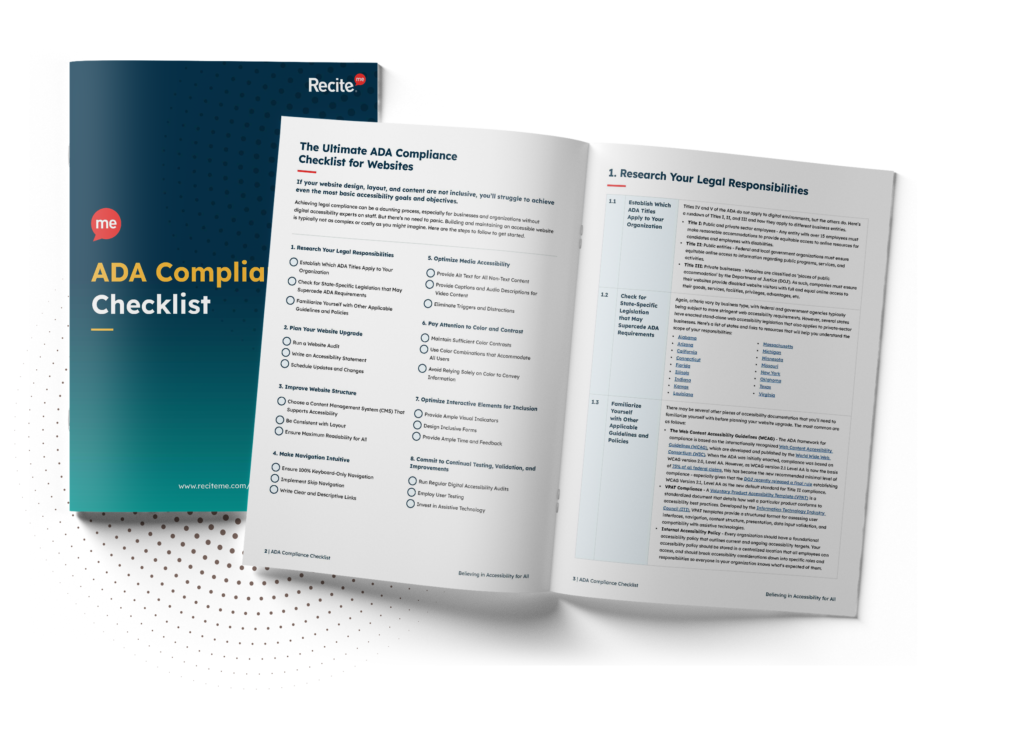
What are the most common ADA compliance on websites?
Awareness of accessibility has improved, but countless websites continue to fall short of ADA standards.These barriers can make it difficult (or impossible) for users with disabilities to access important content or complete tasks online. Let’s explore some of the most frequent accessibility errors in more detail.
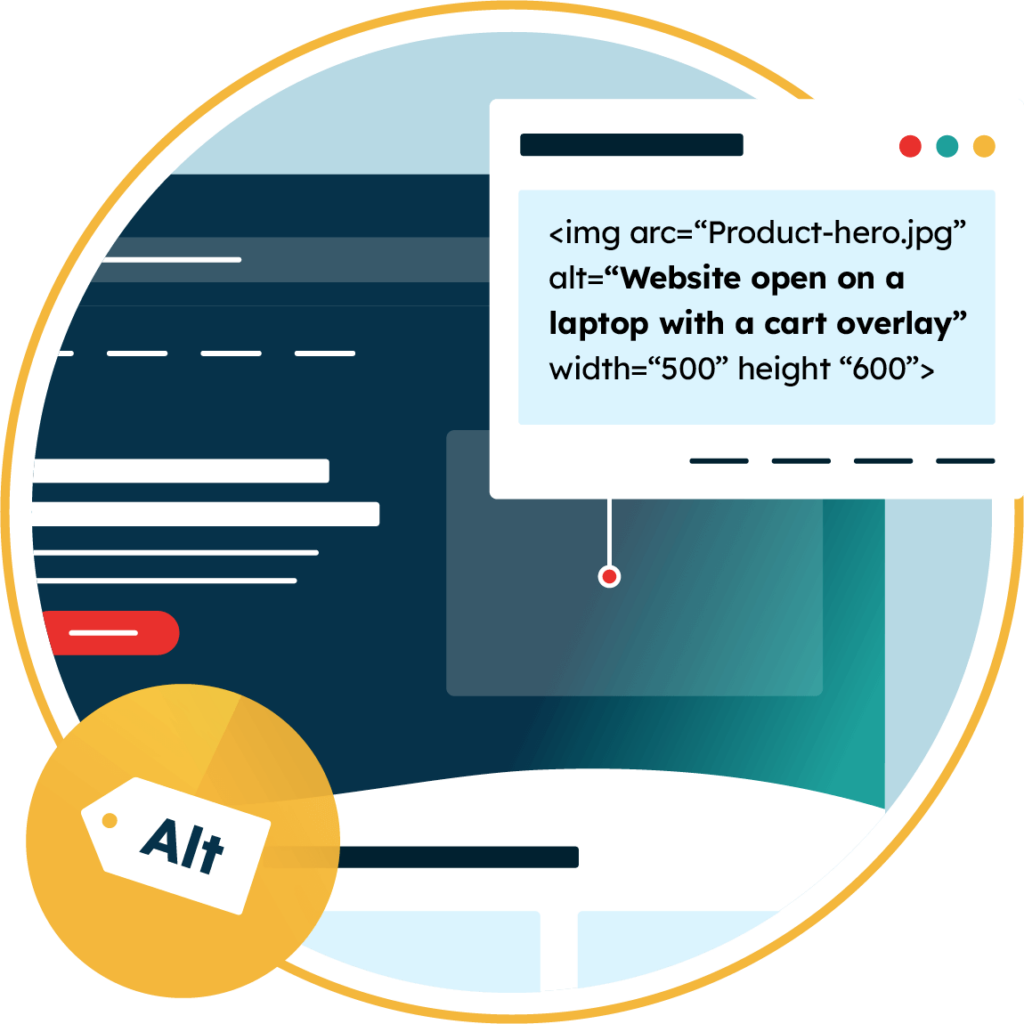
Missing alt text for images
One of the most common ADA compliance issues is missing or improper alternative (alt) text for images. Screen readers use alt text to explain images to users with visual impairments. Without it, important context or details are missing.
For instance, a product image without alt text leaves users unsure of what’s being offered. Good alt text should be short, clear, and descriptive, focusing on the image’s purpose rather than unnecessary detail. Decorative images can use empty alt attributes, but informative images require thoughtful descriptions to ensure all users receive equal access to content.
Poor color contrast
When text blends into its background, users with low vision or color blindness can find it nearly impossible to read. ADA compliance requires websites to maintain minimum color contrast ratios so that text is legible. For example, light gray text on a white background may look stylish but poses accessibility challenges. Ensuring adequate contrast improves readability for everyone, especially on mobile devices or in bright sunlight. Tools like a Color Contrast Checker can help verify compliance with WCAG guidelines.

Inaccessible forms
Website forms are critical for tasks like registrations, purchases, and contact requests. However, many websites overlook accessibility in form design. Common issues with forms include missing labels, vague error messages, and fields that can’t be completed using only a keyboard. For people using screen readers, unlabeled fields make it impossible to understand what information is being requested. To make forms accessible, every field should include clear labels, instructions, and helpful error feedback. Forms should also be designed so users can move through them easily without relying on a mouse.
Lack of captions or transcripts for multimedia
Videos and audio content are increasingly important for online engagement, but failing to provide captions or transcripts excludes users with hearing impairments. Captions also benefit people in noisy environments or those who prefer to read along. For ADA compliance, all pre-recorded video content should include captions, and audio files should have accompanying transcripts. Live content can now also be supported with real-time captioning tools.


Keyboard navigation issues
A lot of users with motor disabilities navigate the web using a keyboard rather than a mouse. If a site isn’t designed with keyboard accessibility in mind, it creates major barriers. Common problems include menus, forms, or interactive elements that can’t be accessed using the tab key. For compliance, websites must allow users to navigate and interact with all features via keyboard. This includes logical tab orders, visible focus indicators, and skip navigation links. Improving keyboard accessibility not only supports users with disabilities but also makes your site smoother for anyone who prefers shortcuts.
Improper or missing headings
Headings help organize content and guide users through your website. Screen readers rely on proper heading structures (H1, H2, H3, etc.) to navigate pages efficiently. Missing, out-of-order, or inconsistent headings make it difficult for people with visual impairments to understand your content and can create a frustrating user experience. Ensuring that headings are descriptive and correctly nested improves accessibility and overall usability.

What are the risks of avoiding ADA violations on your website?
Ignoring ADA compliance comes with significant risks. From a legal standpoint, businesses may face lawsuits, fines, and reputational damage. The number of ADA-related lawsuits for websites has steadily increased in recent years, particularly for e-commerce and service-based businesses.
Beyond legal consequences, inaccessibility alienates potential customers and damages brand trust. An inaccessible site may also perform worse in search rankings, since accessibility overlaps with SEO best practices. Ultimately, avoiding compliance can cost more than investing in accessibility. Proactive compliance protects your business while creating a more inclusive user experience.
Take the first steps towards an ADA compliant website today
Ready to fix the ADA compliance issues found on your website? Follow these actionable steps to get started today:
Step 1: Run an ADA accessibility audit
Begin your compliance journey with a comprehensive free ADA compliance scan of your website. Automated tools can detect common issues like missing alt text, poor contrast, or broken navigation, but manual testing is equally important.
A thorough audit will give you a clear picture of where your website falls short and provide a roadmap for improvement. Conducting an audit is the essential first step to building an ADA-compliant website that serves all users effectively.
Step 2: Prioritize fixes from the audit and implement them
Once you’ve identified accessibility issues, the next step is to prioritize them. Focus first on critical barriers that prevent access to core functions like navigation, purchasing, or content consumption. Addressing these high-impact problems ensures you’ll bring immediate improvements for users with disabilities.
From there, tackle the remaining issues systematically, working toward full WCAG compliance. Implementation may involve your whole team: developers, designers, and content creators. By breaking the process into manageable steps, you can steadily improve accessibility without overwhelming your team.


Step 3: Provide training to your employees
Training your employees on ADA, especially web developers, content creators, and marketers, will ensure accessibility is built into everyday workflows. Staff should understand the basics of WCAG, know how to create accessible content, and use tools that flag issues early. For example, teaching writers to add alt text or designers to maintain color contrast prevents issues before they arise. Empowering your team with accessibility knowledge fosters a culture of inclusion and reduces the risk of recurring violations.
Step 4: Outline changes and accessibility commitments in an accessibility statement
An accessibility statement communicates your organization’s commitment to accessibility. It should outline the standards your website follows, recent improvements you’ve made, and ways users can report accessibility barriers.
Publishing this statement demonstrates transparency and accountability. It reassures users with disabilities that their needs are taken seriously and provides a clear channel for feedback. A well-written accessibility statement also shows regulators and courts that your business is actively working toward compliance. Including this on your site strengthens trust and reflects a genuine commitment to equal access.


Step 5: Schedule future ADA audits for ongoing compliance
Accessibility needs to be an ongoing process, as websites evolve constantly with new content, features, and design updates. Regular ADA audits ensure that your site remains compliant as it grows. Scheduling periodic reviews helps catch new issues early and demonstrates your ongoing commitment to accessibility.
These audits should combine automated tools, manual checks, and feedback from users with disabilities. Building accessibility into your long-term maintenance plan reduces legal risk and creates a sustainable, inclusive digital presence.
Get a free automated ADA compliance audit of your website. This audit will highlight compliance violations and provide the recommendations needed to meet ADA compliance standards.
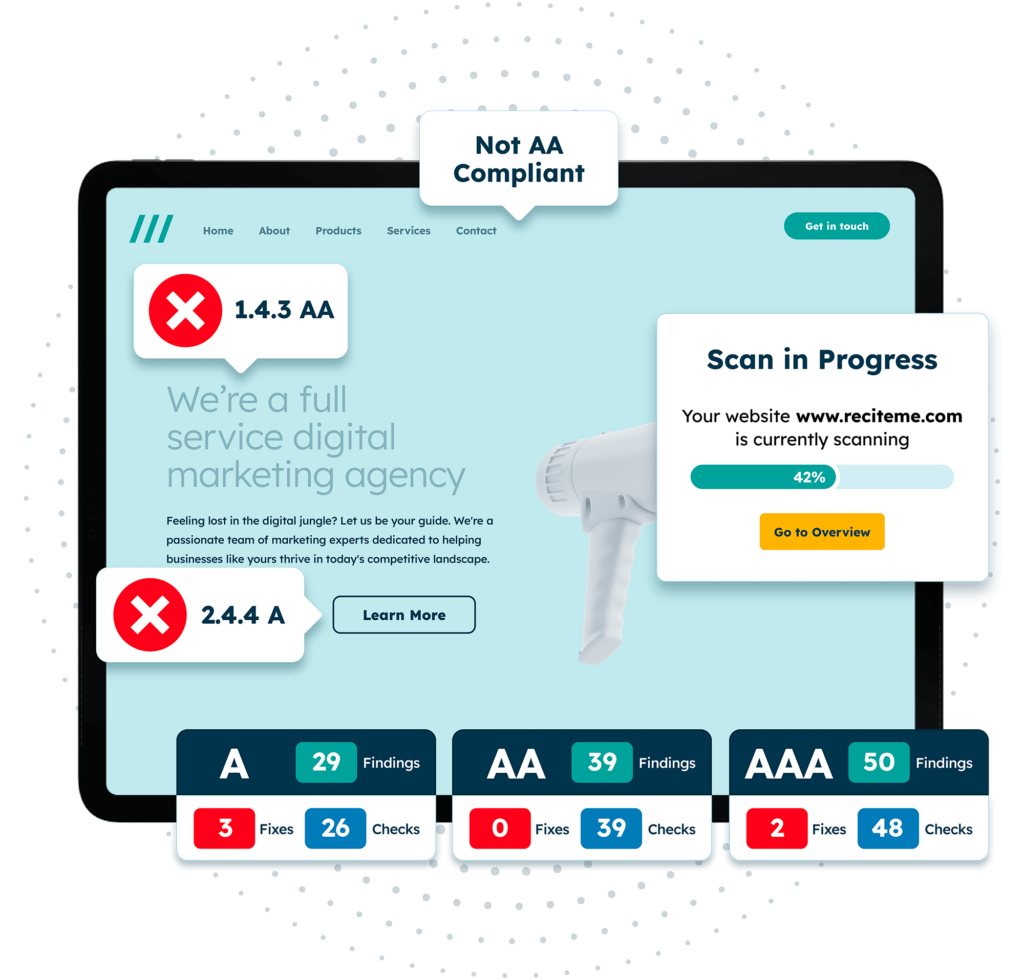
Conclusion: Don’t wait to get ADA compliant!
ADA compliance is both a legal requirement and an ethical responsibility. By addressing accessibility issues now, you open your website to a wider audience, build trust, and future-proof your business against legal challenges. The process may seem overwhelming at first, but with an accessibility audit, prioritized fixes, and ongoing monitoring, compliance is within reach. Every step you take improves the user experience for all visitors, including those with disabilities. Don’t wait for a lawsuit or complaint to act. Start making your website ADA-compliant today.
ADA Compliance Issues FAQs
Looking for a recap or quick summary? Here are a few of our most frequently asked questions to help you get to grips with the essentials:
Is ADA compliance mandatory for all websites?
Yes, ADA compliance applies to most public-facing websites. All businesses that serve the public (retailers, hotels, banks, service providers etc) are expected to meet ADA requirements.
What level of WCAG compliance should I aim for?
WCAG 2.1 Level AA is widely recognized as the standard for ADA compliance.
What are the penalties for not being ADA compliant?
Penalties can include lawsuits, legal settlements, and reputational damage. Fines vary depending on the case, but lawsuits can cost tens of thousands of dollars.
Is ADA compliance the same as Section 508 compliance?
Not exactly. Section 508 applies to federal agencies, while ADA applies to public facing businesses. Both share accessibility principles but differ in scope.
Do plugins or widgets make my website ADA compliant automatically?
No. While accessibility plugins can fix some issues, they are not a complete solution. True compliance requires building accessibility into your site’s code, design, and content.
Is ADA compliance a one-time project?
No. Compliance must be ongoing as your website evolves. Regular audits and updates are necessary to maintain accessibility for new content, pages and design updates.
Who enforces ADA compliance for websites?
The US Department of Justice (DOJ) enforces ADA regulations, but many cases are initiated by private lawsuits. This makes proactive compliance especially important.
Need more help becoming ADA compliant?
The following resources are packed full of actionable tips and expert advice for making your digital content compliant with the Americans with Disabilities Act:
Free ADA Accessibility Training
Take the first step to ADA compliance by completing our training course.
Free ADA Accessibility Guide
Ensure your organization is meeting the requirements for ADA compliance.


